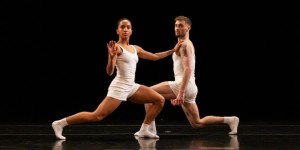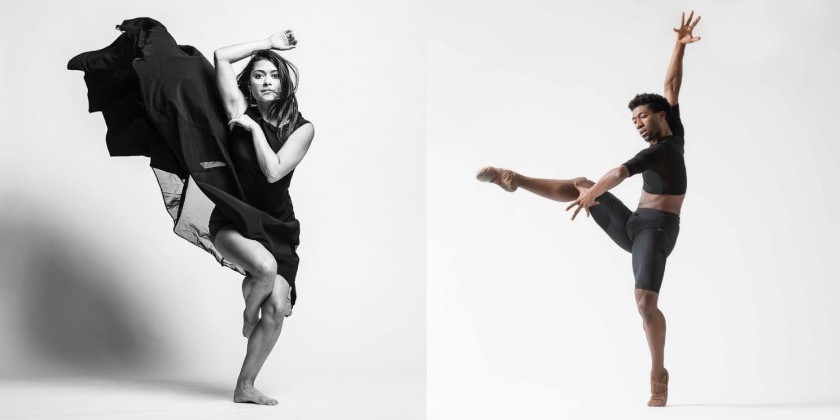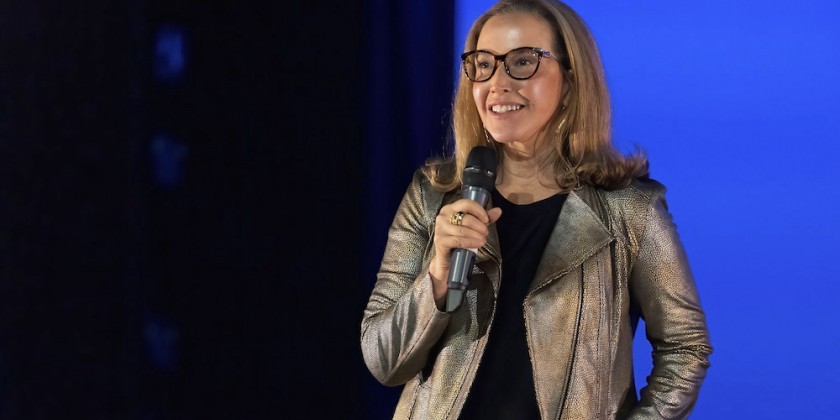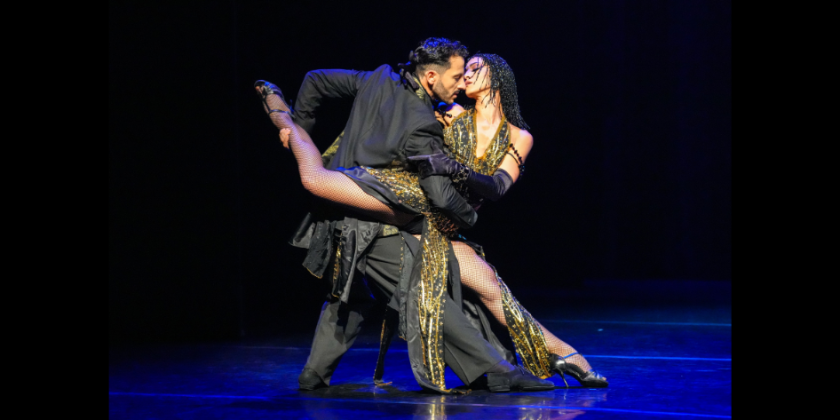The Dance Enthusiast Hits the Streets: Dance/NYC Symposium (Part 2)

Garnet Henderson and Maxine Montilus Report on the One Day Event at Gibney Dance
The Dance Enthusiast Hits The Streets: Dance/NYC Symposium
February 22, 2015
Gibney Dance, 280 Broadway
(Pictured above: Pedro Ruiz and Kitty Lunn)
Garnet Henderson
As a young artist, it was exciting to start my day at the Dance/NYC 2015 Symposium with Dance/NYC’s Junior Committee, tackling what it means to be an emerging artist and what resources are available for our group. “Emerging artist” is a slippery category. It was affirming to realize that I’m not alone in my struggle with the term, and to learn that institutions like Gibney Dance and the Lower Manhattan Cultural Council are aware of gaps in services available for young artists. Gibney and LMCC are both focused on providing emerging artists with space, resources and mentorship. These things are all very valuable, but as young choreographer Danielle Russo pointed out, programs to help artists build the infrastructure required to move beyond the “emerging” level are still lacking. She also echoed a problem I have personally encountered, which is that it takes so long for a choreographer to even get to the point of being considered “emerging.”

I was also pleased to see that many of the symposium’s panels focused on issues of cultural equity and privilege. Though there is so much work to be done in making dance more accessible for all the residents of our city, Dance/NYC should be applauded for its awareness that dance does not exist in a vacuum, and that art can, in fact, be an agent for change and inclusion. Panelists like Alexandria Wailes, a deaf dancer, actor, and teacher, and Alice Sheppard, a dancer and choreographer who uses a wheelchair, brought the need to make our field more inclusive of dancers and audience members with disabilities into sharp focus. Sheppard challenged us to think of disability as an aesthetic, and to radically reevalute the kinds of bodies we expect to see in a dance setting.

Sydney Skybetter placed a number of dancers, choreographers, and media professionals in the “hot seat” to talk about technology. Susan Gluck Pappajohn’s startup Arthenia, a website that allows users to create “media-rich learning playlists” was especially exciting. She pointed out – something I often hear – that many people feel they don’t have a “way in” to dance, and offers Arthenia as a solution to situate art within larger social and historical contexts to help people dig in.
Maxine Montilus
The “Dance Education For Every Child” panel featured an impressive roster of eight educators who spoke passionately about their work in the field. Moderator Jody Arnhold asked the panelists to share their plans for making dance education universal, she also asked the attendees to share (on cards, turned in at the end of the session) their actions in this arena. Having so many speakers did not allow time for discussion about the challenges facing dance educators, especially the challenge of maintaining one’s artistic practice while meeting the demands of a teaching position.

The sessions that made the biggest impression were the three that dealt with “Power, Privilege, & Perception: Voices on Race and Dance.” The first, “My Lens, My Dance” was facilitated by former Dance/NYC Director, Michelle Ramos-Burkhart. She discussed the concept of implicit bias, the underlying prejudices and assumptions that people may not realize they hold, which can influence their decisions. Implicit bias is of particular concern to artists regarding funders (who they chose to support); employers (who they chose to hire) and presenters (who they chose perform in their spaces.)

The panel that followed, “National Voices,” aimed for a larger discussion on the systemic issues involving race within the field. Barriers to equity in the field; who is responsible to help promote progress towards inclusion; and the work of Dance USA’s Diversity Committee in broadening the scope of the organization’s mission statement, were the topics discussed.
The final session “Making Changes: Artist Voices,” featured panelists who spoke about what they are doing to move diversity forward. This panel featured many speakers from large ballet companies: American Ballet Theatre, Dance Theatre of Harlem and Ballet Hispanico. The last two panelists were independent dancer and choreographer Alice Sheppard, who spoke of her work pushing against barriers for dancers with physical disabilities, and Sydnie Mosley, the founder and artistic director of Sydnie L. Mosley Dances, a contemporary company that uses its repertory to address social issues. Not to diminish the work of the aforementioned ballet companies, but I would have preferred to see more diversity on this panel, particularly as there are many independent artists and smaller institutions who work in the area of social justice and equity.

While significant points were made in the last three sessions, my frustration lay with their brevity (each session lasted only an hour.) This did not allow time for deeper discussions nor the opportunity to look at possible solutions. Then again, is this even realistic?
How can we possibly discover solutions to racial bias in our field within a symposium that only lasts one day-- especially when we live in a country still in denial of our history with racism and its pervasiveness in our culture?

The words of Carlton Turner, Executive Director of ALTERNATE Roots, a regional arts service organization rooted in social justice, resonated with me. He continued to point out that the dance world does not exist in a vacuum -- issues around racism and exclusion are global problems. At one point, when asked about barriers to inclusion and participation, he stated, “Our inability to talk about the issues in this field as a continuum of the history of this country is one barrier, and the arts leaders that have been in on this conversation, but on the fence about admitting there’s a problem is another…The art is the identifier of the culture we come from.” Given the barriers, I wonder how Dance NYC’s Symposium could approach discussions on race in the future.












